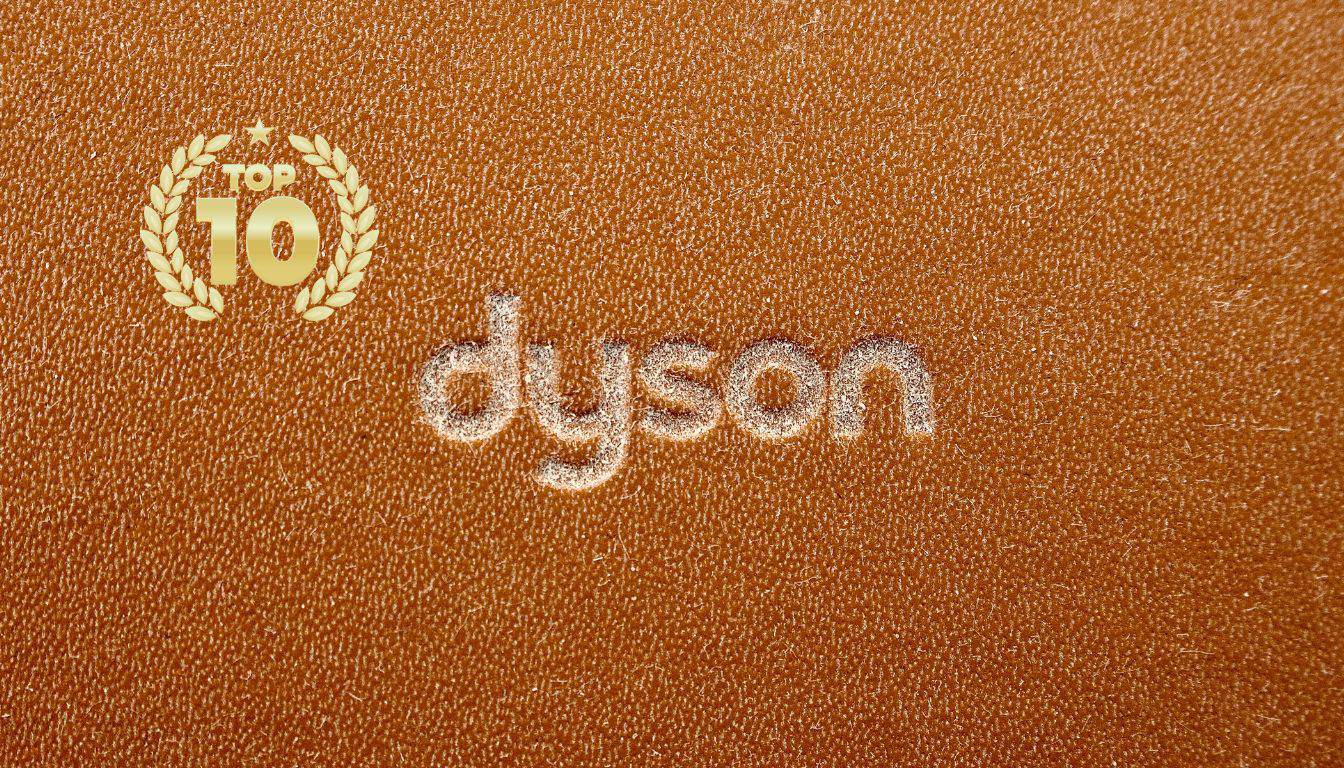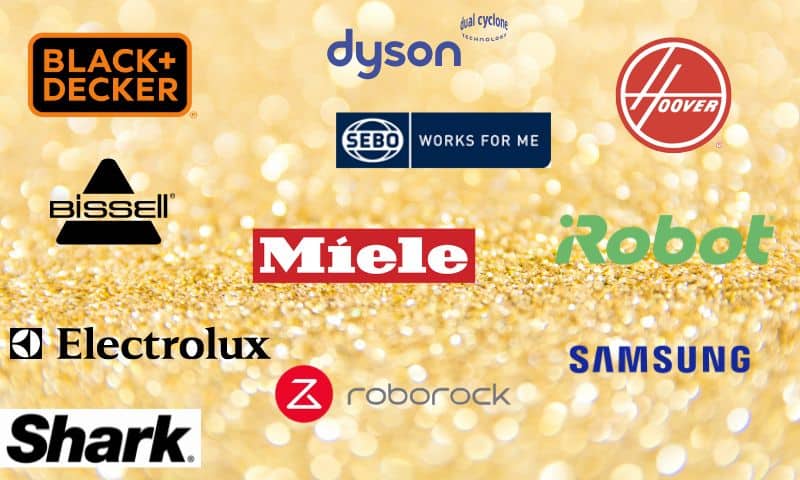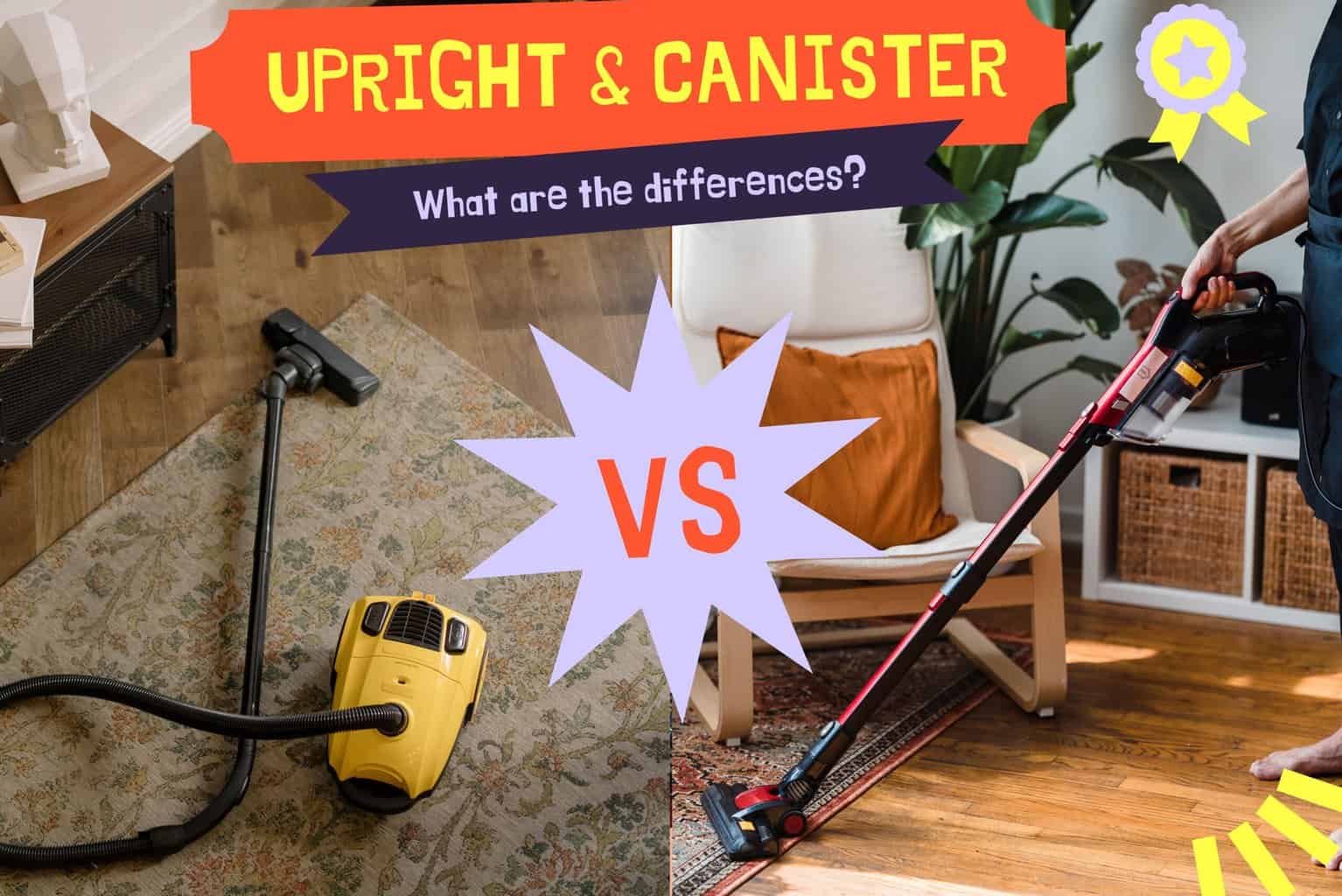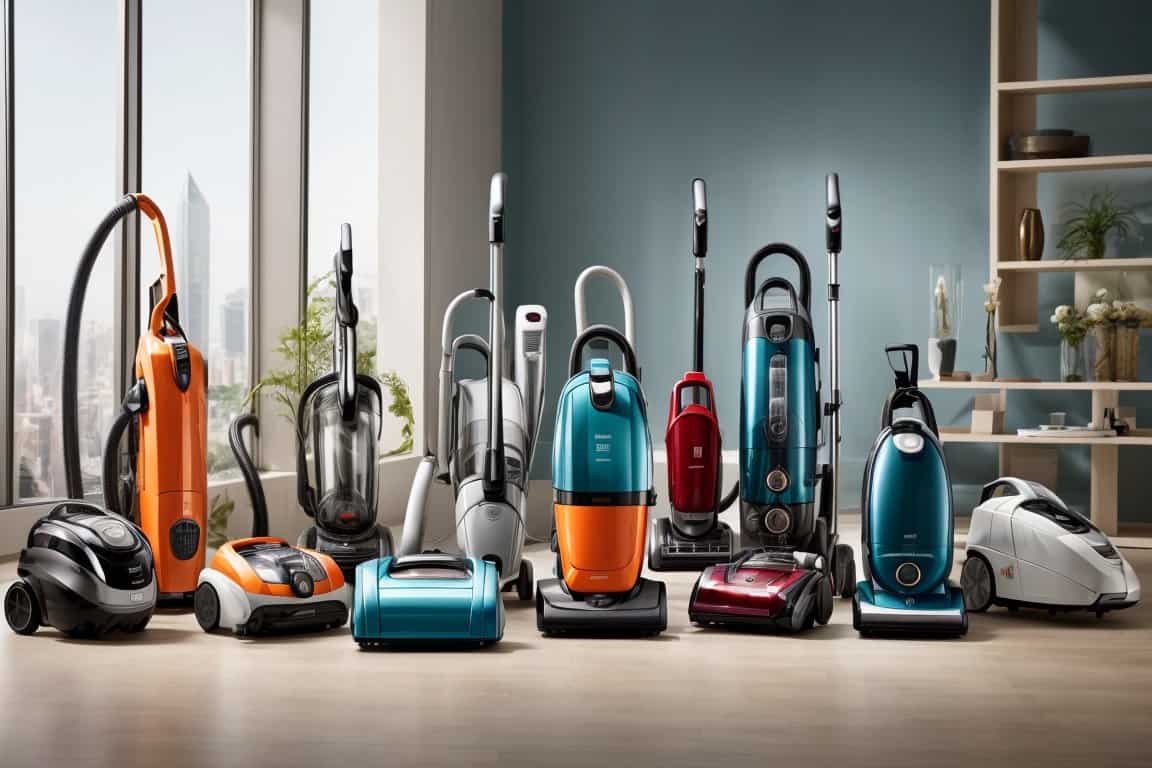
From aggressive vacuum cleaners types for deep cleaning to compact-sized vacuums for easy maneuverability, we will explore the different types of vacuum systems that cater to all your floor cleaning needs. Whether you’re considering carpet cleaners with powerful suction or central vacuum systems for improved indoor air quality, we’ve got you covered. So buckle up and get ready to dive into this informative journey that will leave your home spotless.
“Cleaning your house while your kids are still growing up is like shoveling the sidewalk before it stops snowing.” – Phyllis Diller.

The Evolution of Vacuum Cleaner Types Technology
Please read our Article about the history of vacuum cleaners
Vacuum cleaners have come a long way since their humble beginnings in the 19th century. Back then, people relied on manual carpet sweepers to keep their floors clean. These sweepers required physical effort and could have been more efficient at picking up dirt and dust.
However, in the early 20th century, electric vacuum cleaners revolutionized the cleaning industry. These new vacuums made cleaning much easier and more effective. They were powered by electricity, which allowed for better suction power and improved cleaning performance.
Over the years, advancements in technology have led to significant improvements in vacuum cleaner design. Filtration systems have become more sophisticated, ensuring that even the smallest particles are captured and trapped within the vacuum. This has contributed to better air quality indoors, especially for those who suffer from allergies or asthma.
Modern vacuums now come equipped with innovative features like HEPA filters. These filters are designed to remove allergens and other harmful particles from the air, making your home a healthier place to live.
Another area where vacuum cleaners have seen advancements is maneuverability. Older models were often heavy and difficult to move around. However, newer models are lightweight and easy to handle, allowing you to navigate through different areas of your home without any hassle.
In recent years, there has been a surge in smart technology being integrated into vacuum cleaners. Some models can be controlled remotely through smartphone apps or voice assistants like Alexa or Google Assistant. This allows you to schedule cleanings or control the vacuum’s movements with just a few taps or voice commands.
It’s also worth mentioning water lift as an essential factor when considering a new vacuum cleaner. Water lift refers to the suction power of a vacuum cleaner and determines how effectively it can pick up dirt and debris from various surfaces. A high water lift ensures thorough cleaning across different floor types, including carpets, hardwood floors, and tiles.
Upright Vacuum Cleaners: Design, Benefits, Bagged vs. Bagless
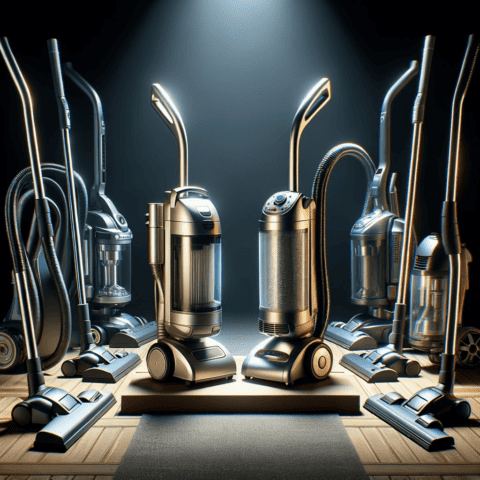
Upright vacuum cleaners are a popular choice for many households due to their stand-up design and powerful suction capabilities. These vacuums are designed to be easily maneuverable, allowing you to navigate around furniture and tight corners with ease.
One of the key benefits of upright vacuum cleaners is their ability to deep clean carpets effectively. With their powerful suction, they can remove dirt, dust, and debris from both low-pile and high-pile carpeting. Whether you have pets that shed or children who track in dirt, an upright vacuum can tackle the mess with ease.
There are a few factors to consider. Bagged upright vacuums offer better allergen containment as the dirt and debris are collected in a disposable bag. This is especially beneficial for individuals who suffer from allergies or asthma as it prevents the release of allergens back into the air during emptying.
On the other hand, bagless upright vacuums provide cost savings on replacement bags since they utilize a dustbin instead. Instead of purchasing quality bags regularly, you need to empty the dustbin when it becomes full. This can be more convenient and budget-friendly in the long run.
It’s important to note that different upright vacuum models may have varying features and capabilities. Some models are designed specifically for homes with high ceilings or hard-to-reach areas by incorporating extra-long hoses or extension wands. Others may have adjustable settings for different pile heights, allowing you to clean both carpets and hard floors efficiently.
In terms of maintenance, both bagged and bagless upright vacuums require regular cleaning to ensure optimal performance. For bagged models, this includes replacing the bags when they become full, while bagless models require emptying and cleaning the dustbin regularly.
To summarize:
- Upright vacuum cleaners have a stand-up design that makes them easy to maneuver.
- They provide powerful suction for deep cleaning carpets, including both low-pile and high-pile options.
- Bagged models offer better allergen containment, making them ideal for individuals with allergies or asthma.
- Bagless models provide cost savings on replacement bags and offer convenience in emptying the dustbin.
- Different upright vacuum models may have additional features, such as adjustable settings for different pile heights or extra-long hoses for hard-to-reach areas.
With their versatility and efficiency, upright vacuum cleaners are a reliable choice for keeping your home clean and fresh. Whether you opt for a bagged model or a bagless one, these vacuums can make your cleaning tasks more accessible and more effective.
Canister Vacuum Cleaners: Differences, Pros and Cons
Canister vacuum cleaners are a popular choice for many households due to their unique design and versatility. Unlike upright vacuums, canister models consist of a separate unit connected to a wand via a hose. This setup offers several benefits that make them worth considering when shopping for a new vacuum cleaner.
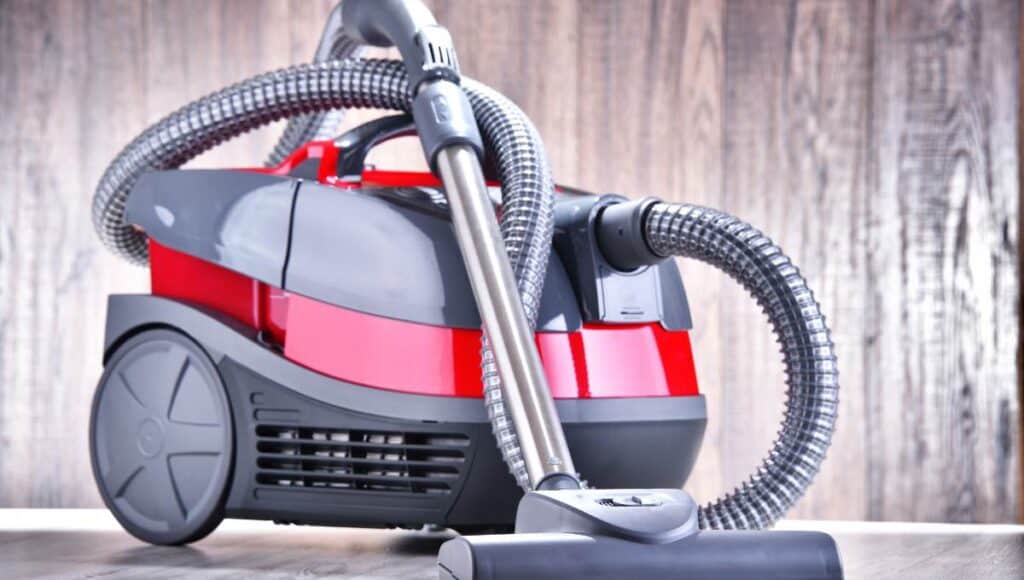
Versatile Cleaning Power
One of the significant advantages of canister vacuum cleaners is their ability to clean different surfaces with ease. The detachable wand and hose allow you to reach areas that are difficult to access with other types of vacuums, such as under furniture or in tight corners. Whether you need to vacuum hardwood floors, carpets, or upholstery, a canister vacuum can handle it all.
Lightweight and Easy Maneuverability
If you live in a multi-story house or have stairs in your home, you’ll appreciate the lightweight nature of canister vacuums. Carrying an upright vacuum up and down the stairs can be pretty cumbersome, but with a canister model, it’s much easier due to the separate unit design. You carry the lightweight wand while leaving the central unit at the bottom of the stairs.
Ample Storage Space Required
While canister vacuums offer many advantages, one drawback is that they may require more storage space compared to other types of vacuums. With their separate units and long hoses, finding adequate storage space for both components might be challenging if you have limited room available. However, if storage space isn’t an issue for you, this should encourage you to consider a canister model.
Stick Vacuum Cleaners: Design, Quick Cleanups, Corded vs. Cordless
Stick vacuum cleaners are a popular choice for many households due to their slim and lightweight design. These vacuums are designed to be effortlessly handled, making cleaning a breeze. Whether you have hard floors or low-pile carpets, stick vacuums can quickly tackle the mess.
One of the standout features of stick vacuum cleaners is their sleek and slender design. Unlike bulkier upright or canister vacuums, stick vacs are slim and easy to maneuver around furniture and tight spaces. This makes them ideal for quick cleanups when you want to avoid lugging around a heavier machine.
Stick vacuums offer both corded and cordless versions. Corded stick vacuums provide unlimited runtime since they draw power directly from an electrical outlet. On the other hand, cordless stick vacs offer greater mobility as they operate on rechargeable batteries.
The battery life of a cordless stick vacuum determines how long you can use it before needing to recharge. It’s essential to consider this factor when choosing a cordless model, especially if you have larger areas to clean or multiple rooms in your home. Some models may have longer battery life than others, so be sure to check the specifications before making your purchase.
Now let’s dive into some pros and cons of different types of stick vacuum cleaners:
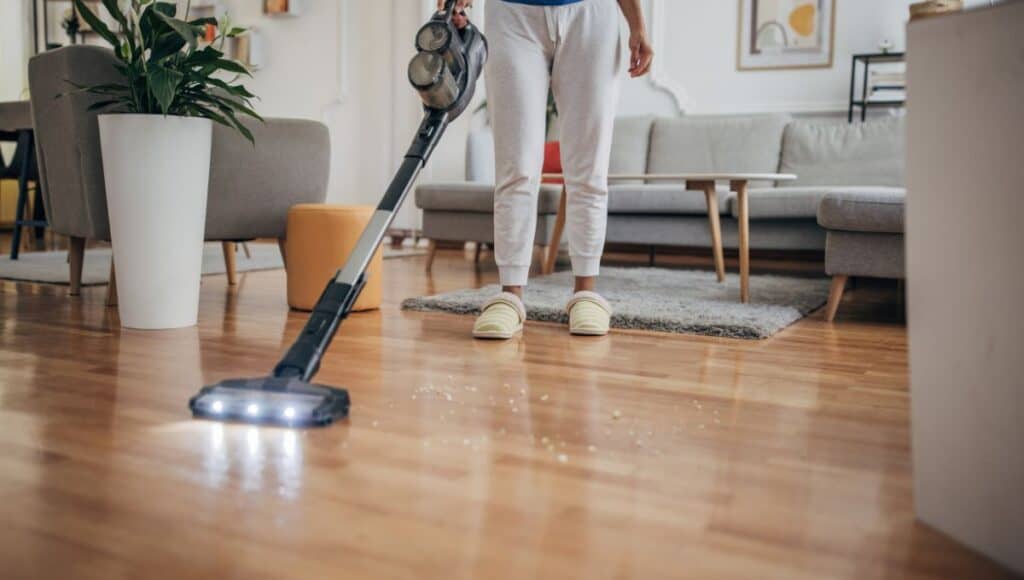
Pros of Stick Vacuum Cleaners:
- Slim and lightweight design for easy handling
- Ideal for quick cleanups on hard floors or low-pile carpets
- Corded versions offer unlimited runtime
- Cordless versions provide greater mobility
Cons of Stick Vacuum Cleaners:
- Limited capacity compared to larger vacuum types
- Not suitable for deep cleaning high-pile carpets or wall-to-wall carpeting
It’s important to note that while stick vacuums excel at quick cleanups, they may not be the best choice for deep cleaning tasks or homes with wall-to-wall carpets. The lower power and smaller capacity of stick vacuums make them more suitable for maintaining cleanliness rather than heavy-duty cleaning.
Wet and Dry Vacuum Cleaners: Dual Functionality, Benefits, Use Cases
Wet and dry vacuum cleaners are versatile cleaning tools that can handle both wet spills and dry debris with ease. These vacuum cleaners are designed to tackle various messes, making them an excellent choice for garages, workshops, or outdoor use.
One of the critical benefits of wet and dry vacuum cleaners is their dual functionality. Unlike traditional vacuum cleaners that can only handle dry debris, these models can suck up liquids as well. This means you can quickly clean up a spilled drink or tackle a flooded basement without having to switch to a different cleaning tool.
The powerful suction capabilities of wet and dry vacuum cleaners make them ideal for handling both large and small messes. Whether you’re dealing with sawdust in your workshop or a pool of water in your garage, these vacuums can effectively remove the debris or liquid without any hassle.
To ensure that wet and dry vacuum cleaners can handle liquids without damaging the motor or causing any issues, they are equipped with special filters. These filters are designed to separate the liquid from the air, preventing it from reaching sensitive components. This feature not only protects the internal workings of the vacuum but also ensures efficient performance when tackling wet messes.
Wet and dry vacuum cleaners shine in various scenarios:
- Garage Cleanup: Whether it’s oil spills, coolant leaks, or general dirt and debris on your garage floor, these vacuums can handle it all. Their ability to suck up liquids makes them perfect for keeping your garage clean and tidy.
- Workshop Maintenance: Sawdust, wood shavings, and other debris are common in workshops. A wet and dry vacuum cleaner is an invaluable tool for quick cleanup after woodworking projects or any other messy tasks.
- Outdoor Cleaning: From patio areas covered in leaves to muddy footprints on your porch after a rainy day, wet and dry vacuum cleaners can easily tackle outdoor messes. Their versatility allows you to clean up both dry and wet debris efficiently.
Handheld Vacuum Cleaners: Compact Design, Spot Cleaning, Battery Life
Handheld vacuum cleaners are small-sized vacuums designed for portability. They are perfect for spot cleaning and reaching tight spaces that larger vacuums can’t easily access. With their compact design, they are lightweight and easy to maneuver.
One of the main advantages of handheld vacuums is their ability to clean small messes quickly and efficiently. Whether it’s crumbs on the kitchen counter or pet hair on the upholstery, a handheld vacuum can handle it with ease. They come in both corded and cordless models, offering flexibility in terms of power source.
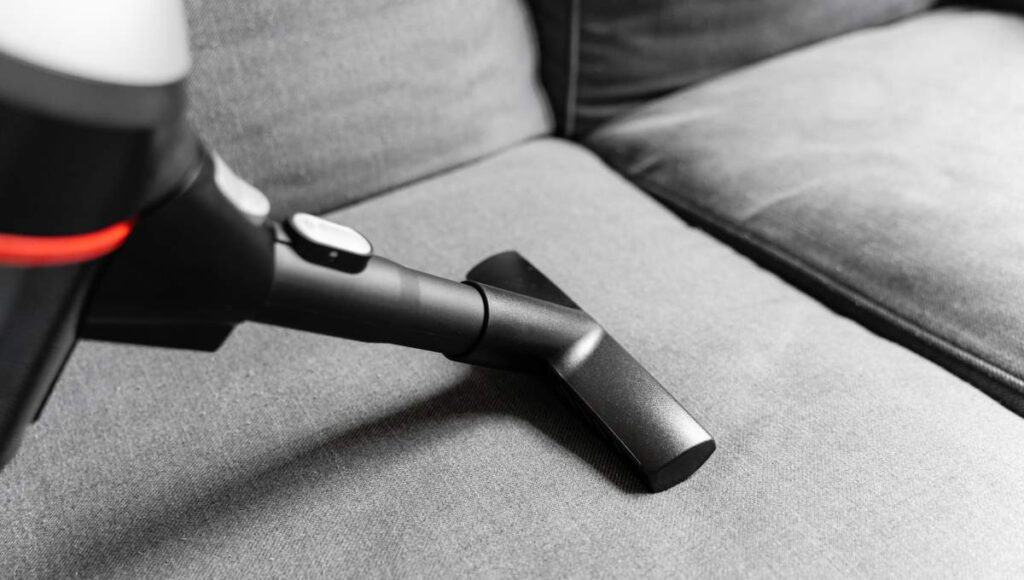
Small-sized vacuums designed for portability
Handheld vacuums are specifically designed to be lightweight and easy to carry around. They usually have a compact design that allows them to fit comfortably in your hand. This makes them ideal for quick cleanups or when you need to clean multiple areas without lugging around a heavy vacuum cleaner.
Perfect for spot cleaning and reaching tight spaces
The compact size of handheld vacuums makes them perfect for spot cleaning. You can quickly grab one when you spill something on the floor or when you notice dust accumulating in hard-to-reach corners. Their small brush attachments or crevice tools allow you to get into tight spaces like car interiors, stairs, or between furniture cushions.
Battery life affects usage time.
Cordless handheld vacuums rely on batteries for power. The battery life determines how long you can use the vacuum before needing to recharge it. It’s essential to consider this factor when choosing a handheld vacuum cleaner because longer battery life means more uninterrupted cleaning time.
Some handheld vacuum models offer replaceable batteries, allowing you to extend usage time by simply swapping out the depleted battery with a fully charged one. Others come with charging docks or wall mounts that keep the vacuum charged and ready whenever you need it.
Useful for cleaning car interiors, upholstery, and small messes
Handheld vacuums are particularly useful for cleaning car interiors. They can easily reach into the tight spaces between seats or clean up crumbs and debris that accumulate on the floor mats. Their compact size also makes them great for cleaning upholstery, such as sofas, chairs, or even pet beds.
In addition to their portability and versatility, handheld vacuums often come with various attachments to enhance their cleaning power. These attachments may include a power brush or revolving brush for deep-cleaning carpets or a crevice tool for reaching narrow gaps and corners.
To sum it up, handheld vacuum cleaners offer convenience and flexibility in your cleaning routine. Their compact design allows you to tackle small messes quickly and efficiently. Whether you need to clean your car interior, upholstery, or spot clean around the house, a handheld vacuum is a handy tool to have.
Robot Vacuum Cleaners: Automated Cleaning, Navigation, Smart Features
Robot vacuum cleaners are the cool kids on the cleaning block. These high-tech gadgets take care of your dirty floors with minimal effort from you. Let’s dive in and explore the key features that make robot vacuums a popular choice for homeowners.
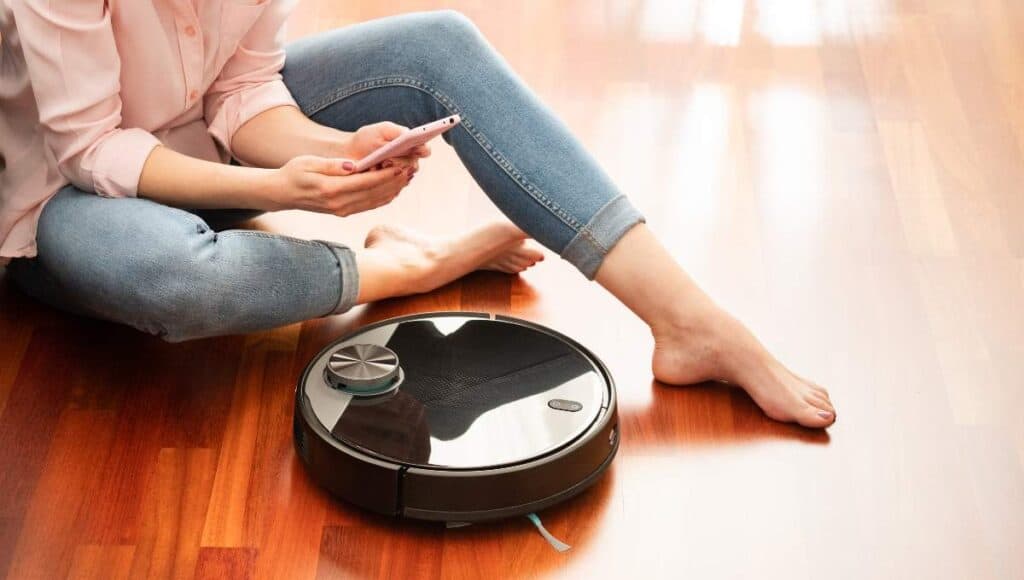
Cleans autonomously with minimal human intervention
One of the most significant advantages of robot vacuum cleaners is their ability to clean autonomously. Once you set them up, they can take care of your floors without much input from you. No more dragging around heavy vacuum cleaners or spending hours pushing them back and forth.
Uses sensors to navigate around obstacles and avoid falls
Robot vacuums are equipped with smart sensors that help them navigate around obstacles and avoid falls. They can detect furniture, walls, and other objects in their path, ensuring a smooth cleaning experience without any collisions or accidents. So you don’t have to worry about your precious furniture getting bumped into or your robot vacuum taking a tumble down the stairs.
Some models can be controlled via smartphone apps.
With advancements in technology, some robot vacuum models come with smartphone apps that allow you to control them remotely. You can schedule cleaning sessions while you’re away from home or even start a cleaning cycle while lounging on the couch. It’s like having a personal cleaner at your fingertips!
Offers features like scheduling, mapping, and virtual boundaries
Robot vacuums offer a range of intelligent features that make cleaning even more convenient. You can schedule when you want your robot vacuum to clean, ensuring that it does its job at a time that suits you best. Some models also create maps of your home as they clean, allowing them to navigate more efficiently during subsequent cleaning cycles.
Virtual boundaries are another nifty feature offered by certain robot vacuums. You can set up virtual barriers using magnetic strips or through the smartphone app to define areas where you don’t want the robot vacuum to go. So, if you have a room with delicate items or an area with cords and cables, you can easily keep your robot vacuum away.
Conclusion: Mastering the Art of Choosing the Right Vacuum Cleaner
Congratulations! You’ve now become an expert in the world of vacuum cleaners. With our comprehensive guide, you’ve learned about the various types of vacuum cleaners available and their unique features. From upright to canister, stick to wet and dry, handheld to robot vacuums. You now have a deep understanding of each type’s design, benefits, and use cases.
Now that you’re armed with this knowledge, it’s time for you to make an informed decision when purchasing a vacuum cleaner. Consider your specific needs and preferences – whether it’s powerful suction for deep cleaning or convenience for quick cleanups. Remember that finding the right vacuum cleaner is like finding a perfect pair of shoes; it should fit your lifestyle seamlessly.
So go ahead and leap! Invest in a vacuum cleaner that will make your cleaning tasks more accessible and more efficient. Say goodbye to dust bunnies and hello to a spotless home!
FAQs
How often should I replace my vacuum cleaner?
It is recommended to replace your vacuum cleaner every 5-10 years or when it starts showing signs of wear and tear. Regular maintenance, such as cleaning filters and emptying dust bags, can prolong its lifespan.
Can I use a bagged vacuum cleaner if I have allergies?
Yes, bagged vacuum cleaners are often preferred by allergy sufferers as they provide better containment of dust particles compared to bagless models. Just make sure to choose one with high-quality HEPA filters for maximum allergen removal.
Are cordless stick vacuums powerful enough for deep cleaning?
Cordless stick vacuums have come a long way in terms of power and performance. While they may not match the suction power of larger uprights or canisters, many cordless models offer sufficient power for regular cleaning tasks.
Can robot vacuums clean multiple floors?
Most robot vacuums are designed to clean a single floor level. However, some high-end models come with advanced mapping and navigation features that allow them to clean multiple floors.
How long do handheld vacuum batteries typically last?
The battery life of handheld vacuums varies depending on the model and usage. On average, you can expect a runtime of around 15-30 minutes per charge. It’s always a good idea to check the manufacturer’s specifications for accurate battery life information.





